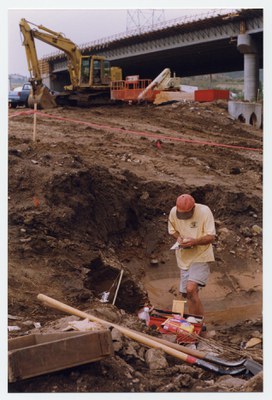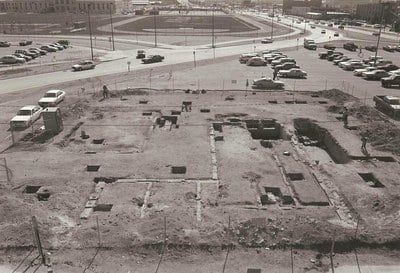FAQs
Q: Why does CDOT have a Cultural Resources Program?
A: CDOT is required by state and federal law to identify and evaluate the significance of historic and prehistoric resources prior to potential impacts related to transportation construction and maintenance activities. Sites evaluated as eligible for listing on the State or National Registers of Historic Places are either avoided, or the proposed adverse effects diminished through archival research, photographic and narrative documentation, and/or archaeological excavation, among other methods. CDOT projects include maintenance of existing roadways, construction of new highway alignments, bicycle and pedestrian paths and other transportation corridors and facilities, improvements to existing highways, and interchange development. As such, existing highway rights-of-way and segments of newly incorporated corridors are investigated for cultural resources during dozens of transportation projects undertaken each year.
Q: Are there important historic and archaeological sites located in highway corridors? Haven't they all been destroyed by past road construction?
A: Over the past 30 years hundreds of historic and prehistoric resources have been documented on nearly every highway in the state as part of CDOT projects. These resources include isolated artifacts, architectural structures, bridges, railroads, irrigation ditches, prehistoric camp sites, stone procurement quarries, bison butchering localities, and in some cases even the highways themselves. Numerous sites were undoubtedly destroyed during the early years of road building in Colorado prior to the enactment of historic preservation laws, but many highway rights-of-way statewide contain intact and important
remnants of our cultural heritage.
Q: Where can I go to collect archaeological artifacts?
A: Historic and archaeological sites are fragile non-renewable resources, and the indiscriminate collection of artifacts without detailed documentation is a manner of site destruction and a theft of our national heritage. Laws protect cultural resources on lands under the jurisdiction of state and federal agencies, and therefore it is illegal to collect artifacts, excavate or otherwise disturb sites on public properties, including highway rights-of-way. The only place where artifacts can legally be collected is on private property, with the owner's permission. According to Colorado law, human skeletal remains and any associated artifacts or materials cannot be collected and retained regardless of their disposition on public or private property.
In order to collect artifacts from archaeological sites, qualified archaeologists (including those employed by CDOT) must first acquire a written permit from the Colorado Historical Society or pertinent federal agency. At the conclusion of a project all materials, including collected artifacts, photographic images and written records, are reposited permanently at an approved curation facility (often a museum). Such curation provides an opportunity for display of unique or representative materials, and also allows for future scientific studies.
Q: Where can I go to obtain information about archaeology and history?
A: Formal degree programs are offered through many of the colleges and universities in Colorado. However, other avenues are available on a somewhat less structured basis. Local historical organizations, as well as the History Colorado, offer hands-on educational and interpretation programs (visit the History Colorado website for a variety of opportunities). Information about Colorado archaeology can be obtained through the Colorado Council of Professional Archaeologists. More structured certification programs are offered through the Program for Avocational Archaeological Certification (PAAC), administered by the Office of the State Archaeologist. The Crow Canyon Archaeological Center, located in the Four Corners area near Cortez, offers an extensive, fee-based interactive training program in archaeology.

